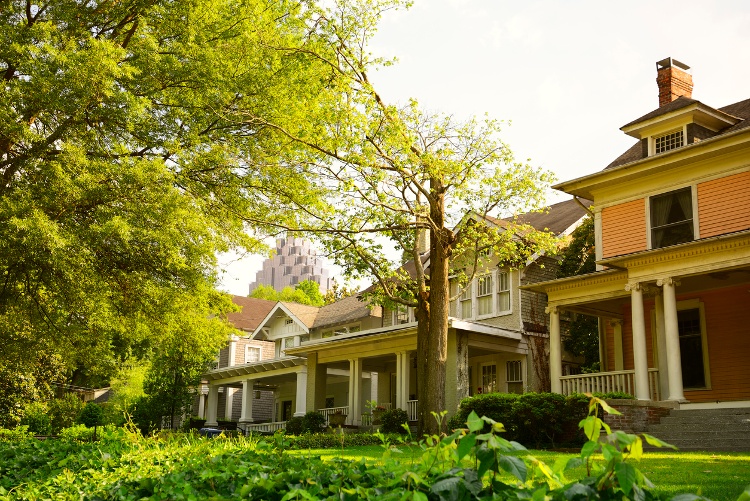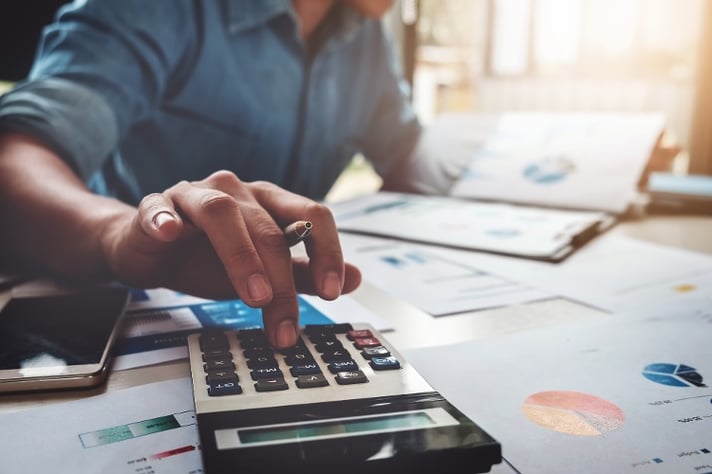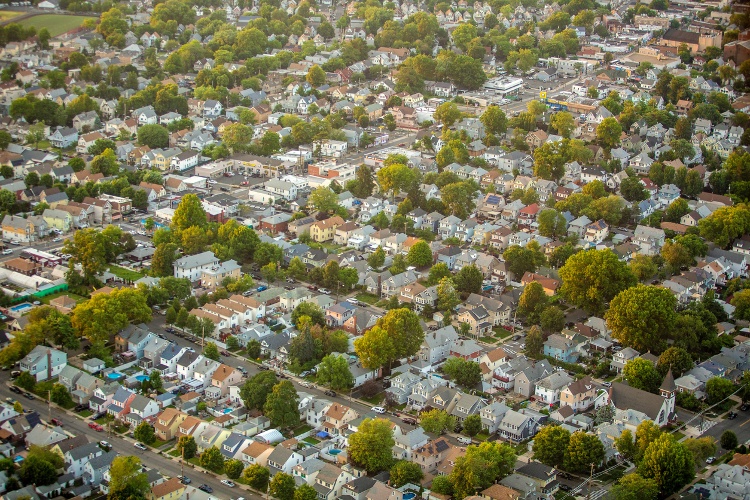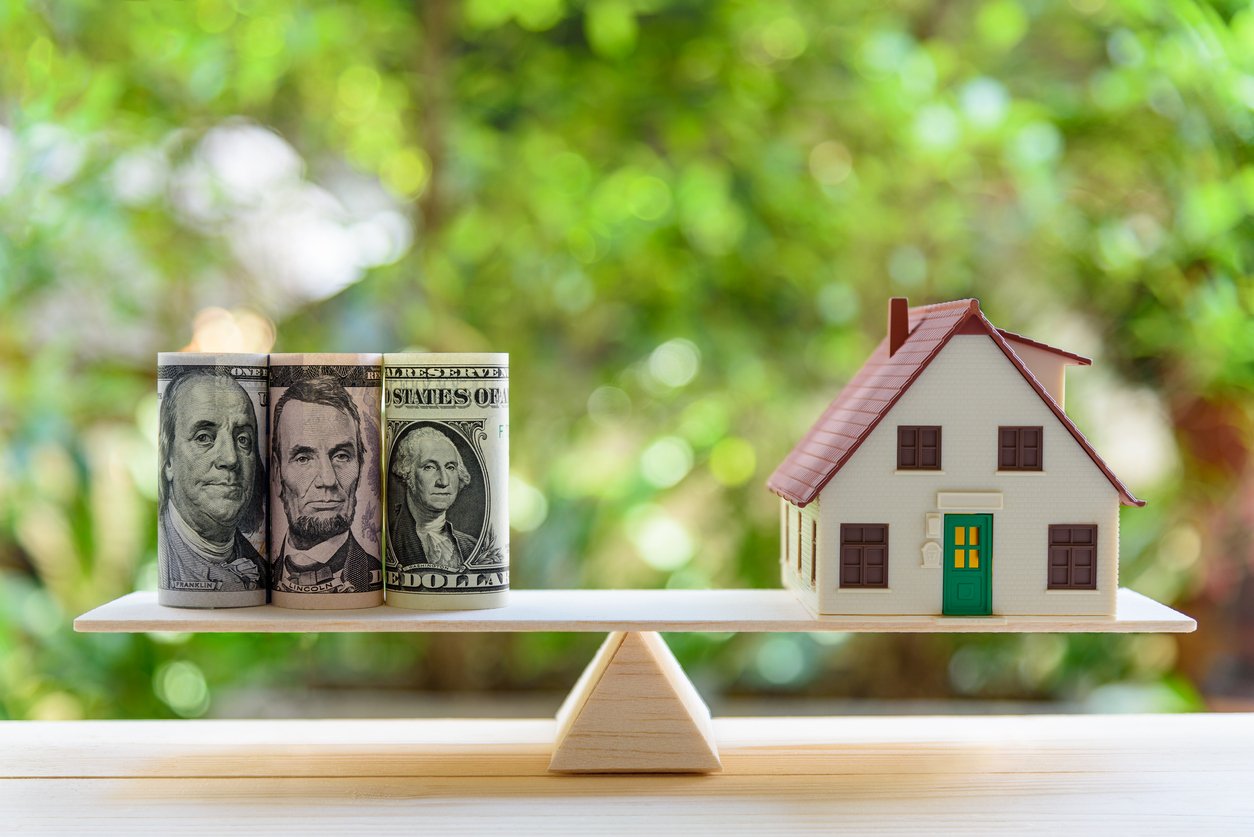As a real estate investor and coach, I constantly get the question “how much profit should I make on my rental property?” While it’s a great question, the answer isn’t always straightforward.
In this article, I will go deep into what’s involved with answering that very personal question as well as pose some thought-provoking questions to help you decide for yourself.

Considerations
When looking into how much profit should be made on a rental property, there are numerous factors to consider.
Risk
The #1 consideration in my mind when determining an acceptable return for a property is risk. How much risk is involved with this deal? The riskier the investment, the more upside there needs to be.
Conversely, if the investment is quite safe or turnkey with very little risk involved, then I don’t mind making less of a profit on that particular deal.
So how does one quantify risk to help determine how much profit should be made on a particular deal?
First, I identify how much work the property needs -- both from a physical perspective and from a management perspective. For instance:
- Is there significant rehab needed or just minor cosmetic repairs?
- What does the current tenant base look like and are their rents below market?
- What is going on in the neighborhood? Is it transitioning?
- How can value be added to this deal?
After I get a handle on the above questions, I’m able to start piecing together just how much risk is involved with the deal and whether or not it is a good fit for me and my skill set.
Profit to Be Made
There are a few different ways to make a profit when investing in real estate.
One way to make profit, which seems to be a hot topic these days, is positive cash flow. Cash flow is the amount of profit you bring in each month after collecting all income, paying all operating expenses, and setting aside cash reserves for future repairs. Typically, cash flow is expressed as cash on cash return (i.e. annual profit/cash invested).
Cash flow is a function of the following:
- Purchase price - This is the price you pay to purchase the property.
- Mortgage payment, and thus prevailing interest rates - This is the amount you borrowed to purchase the property. Most lenders will give you up to 80% of the purchase price if you bring the remaining 20%.
- Rental rate, or rental income - This is the amount of rent collected each month from tenants.
- Maintenance costs - This is the amount of money spent on maintaining the property in good working order and condition.
- Property taxes - This is a tax paid to the county the property is located in. How the tax is calculated can vary widely between different counties.
- Property management - This is a fee paid to someone to manage the property on your behalf. Typically the amount is a set percentage of the rent collected.
- Property insurance - This is insurance purchased to protect the property, and often the owner, from catastrophes.
- HOA fees (if applicable) - This is a fee paid to a homeowners association, if the property has one, and is usually a fixed monthly amount.
If you’re able to manipulate any of the factors above in your favor, you can change the cash flow of the property, and thereby change the profits made.
The second component to profit generation during ownership is the loan paydown. If you’re using leverage, every month there is a portion of the mortgage payment that goes toward paying down the principal balance. The beauty of investment properties is that your tenant is paying down your loan each month.
The difference between what the property is worth and the mortgage balance is equity and the difference between the cash you put into the property and the equity is the profit.
Determining the two-pronged profits to be made during ownership is one piece of the puzzle. The second piece is determining the profits to be made during the sale.
There are two ways to make a profit on the sale of a property:
- Cap rate compression (a.k.a. appreciation)
- Increasing the net operating income (NOI)
We won’t get into how to do either of those things in this article, as there are numerous other posts out there about how to do just that.
However, I will say that cap rate compression is mostly a function of the market, so focusing on increasing the NOI may prove to be more cost effective.
So now that we’ve covered the different ways in which a profit is actually made, let’s discuss how much you should be targeting and how to actually determine if you’re hitting your targets.

Calculating Returns
There are three main metrics that should be calculated to determine what your actual profit is.
They are:
- Cap Rate
- Cash Flow
- Cash on cash return
These three metrics are very easy to calculate once you have all your finances in order. Every investor starts with a forward looking projection (called a pro forma), but then looks at performance at the end of the year to tally actual performance.
These calculations can be done either by hand or using a spreadsheet.
Cap Rate
Start by writing down all of your expenses without any mortgage payments for the year and add them up. Then write down all your income for the year and add that up.
Subtract your expenses from your income. Assuming you have a positive number at the end, you’re doing great! You’ve just calculated your net operating income (NOI).
Then take the NOI and divide it by the price you paid for the property. You will likely get a decimal, so multiply that value by 100 to convert it to a percentage. That percentage is your property’s cap rate.
Let’s use the following numbers to better understand cap rate:
- Property Purchase Price: $100,000
- Annual Rental Income: $12,000
- Annual Expenses without mortgage payments: $6,000
To solve for the NOI, we subtract the expenses from the income we have $12,000 - $6,000 = $6,000 in NOI.
Then we use the equation NOI / purchase price x 100 to solve for our property’s cap rate.
Thus $6,000/$100,000 x 100 = 6% cap rate.
Cash Flow
Take your NOI for the year and subtract out your annual mortgage payments. Again, if this number is positive you’re doing even better than before. What you are left with is annual cash flow. Divide this number by 12 to determine your average monthly cash flow.
For example, let’s say we put down a 20% down payment on the house. Now our numbers look like this:
- Purchase Price: $100,000
- Down Payment: $20,000
- Mortgage: $80,000
- Annual Rental Income: $12,000
- Annual Expenses: $6,000
- Annual Debt Service (i.e. mortgage payments): $4,000
So to calculate cash flow we subtract the expenses and mortgage payments from the income.
Thus $12,000 - $6,000 - $4,000 = $2,000 in annual positive cash flow or, if we divide by 12, we get $166/mo in positive cash flow.
Cash on Cash Return
Lastly, you need to calculate your cash on cash return. This is done by taking your annual cash flow from above and dividing it by the amount of cash you put into the deal (i.e. your down payment if you used debt or the purchase price if you paid all cash) and then multiply by 100 to convert it to a percentage.
If you used debt to finance your purchase, your cash on cash return will be different than your cap rate. If you purchased the property with all cash, then your cash on cash return is equal to your cap rate.
So using the above example, to determine our cash on cash return, we simply divide our annual cash flow by the amount of money we put into the deal as a down payment.
Thus, $2,000 / $20,000 x 100 = 10% cash on cash return
So we can see that if we pay cash for the above property, it will yield a 6% cash on cash return, but if we use debt, it will yield a 10% cash on cash return.

How Much Profit Should I Be Making?
This is a deeply personal question and one that you are unfortunately the only one qualified to make. I know what you all are thinking, “I read this far into an article that tells me I have to know the answer? What a waste of time.”
Before you hit the back button, first think about the following questions:
- What rate of return could I expect from another investment vehicle? The stock market historically returns 7-8% annually.
- How safe are alternative investments?
- How much control do you have over them?
When determining how much profit you should be making, it’s important to have a comparison investment. It’d be great if we could all make 50% cash on cash returns on all our investments, but that’s not a reality for most of us.
So if you could make 8% in the stock market, which many feel is volatile and does not allow for a high degree of control or manipulation, and you could make 3% in the municipal bond market, which is often touted as one of the safest investments available, what sort of return should you expect or require from a real estate investment?
Again, I need to reiterate that this is a question only you can answer.
I would argue that in the beginning, real estate is not nearly as passive as either stock or bond investing. Thus I personally require a higher return than those can offer.
However, due to numerous different investing strategies out there, there are properties that can offer something for everyone.
If you’re someone who needs to get a higher cash on cash return than the stock market can offer, those properties exist.
If you’re someone who is comfortable taking a lesser cash on cash return than the stock market because you believe in the appreciation of the market in which you’re investing, go invest in those properties.
→View investment properties on our marketplace that have an 8%+ cap rate

Final Thoughts
The returns you make from real estate investing are only as important as you make them.
If you’re hyper-focused on maximizing your cash on cash returns, then go purchase properties that meet your criteria.
If you’re someone who focuses more on appreciation, then go focus on markets that are experiencing, or you believe will shortly be experiencing, maximum appreciation.
It’s important to keep front of mind that one year in real estate investing is like a blink of an eye -- it’s very quick and it doesn’t define you as an investor nor your property.
Real estate investing is a marathon, not a sprint, so make a plan, stick to it and don’t become distraught when you had a target cap rate of 8%, but the property only performed at a 7% cap rate.
Things don’t always go according to plan, so learn from the experience, and just go do better next time.









